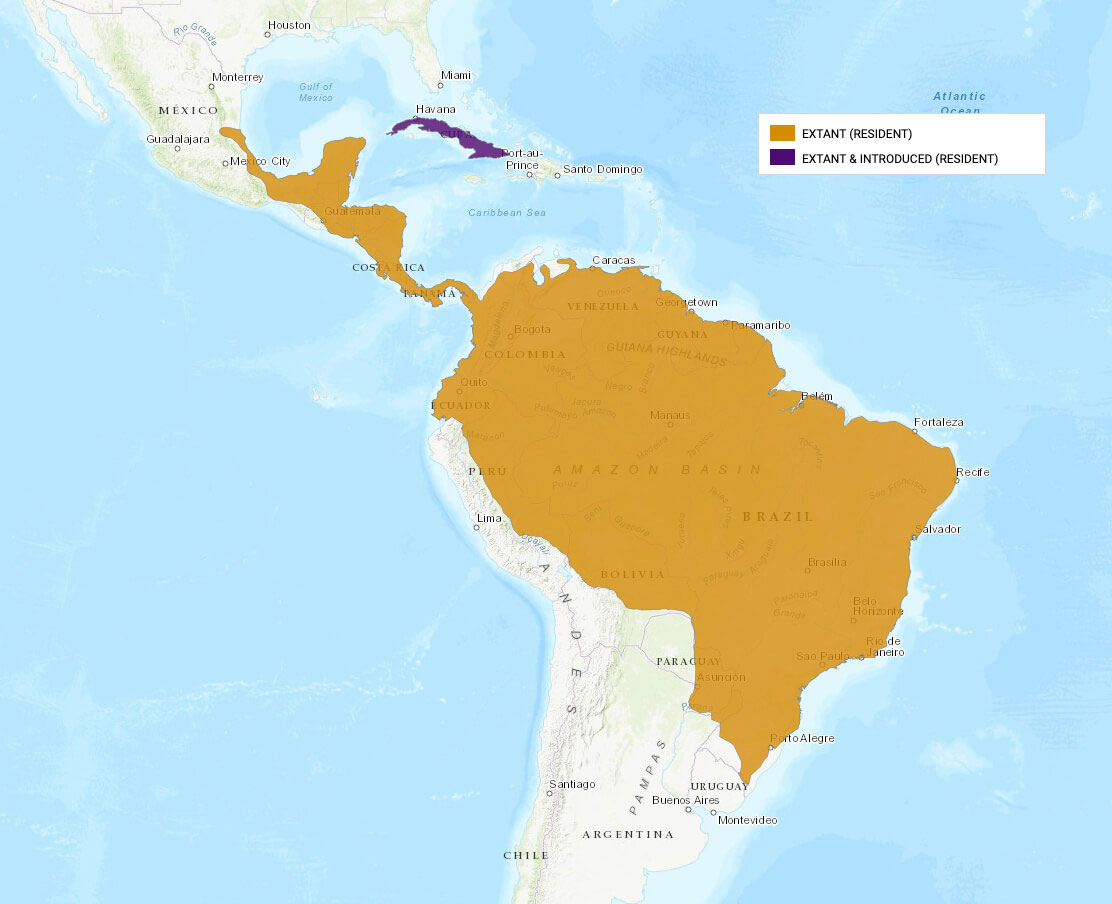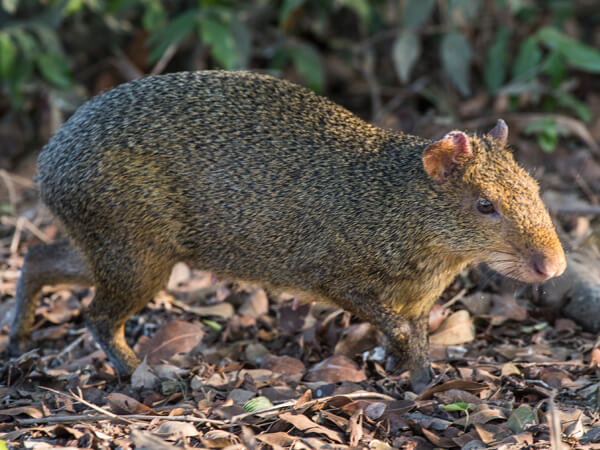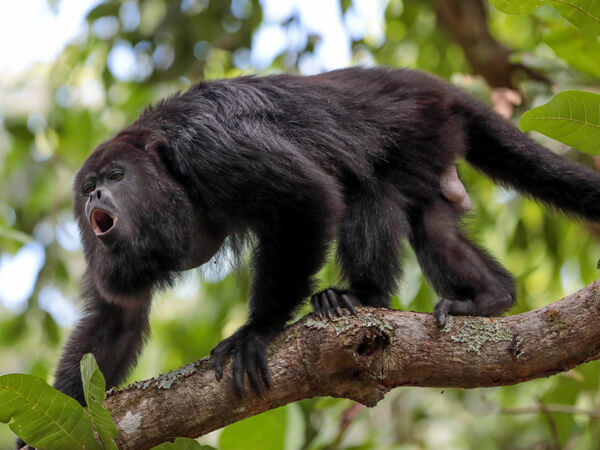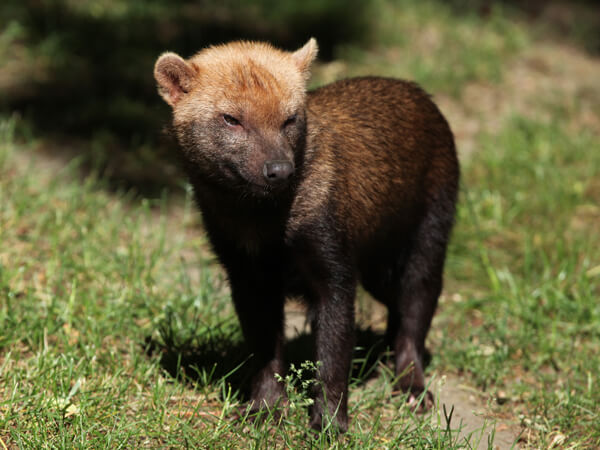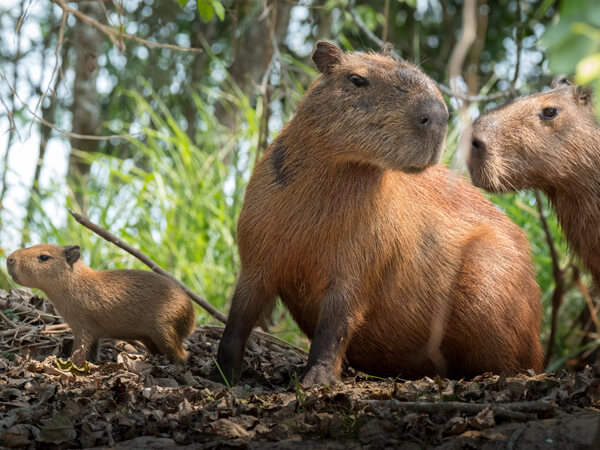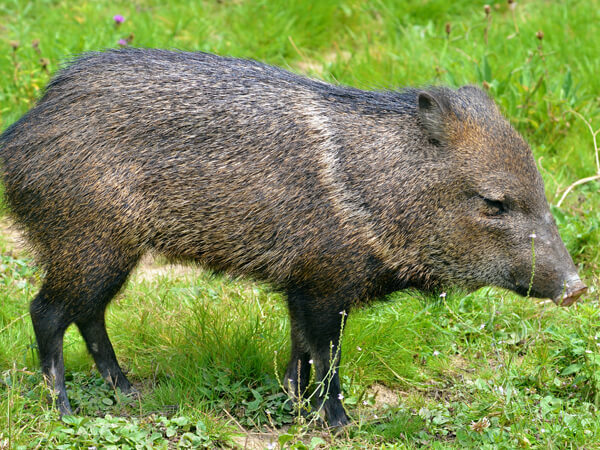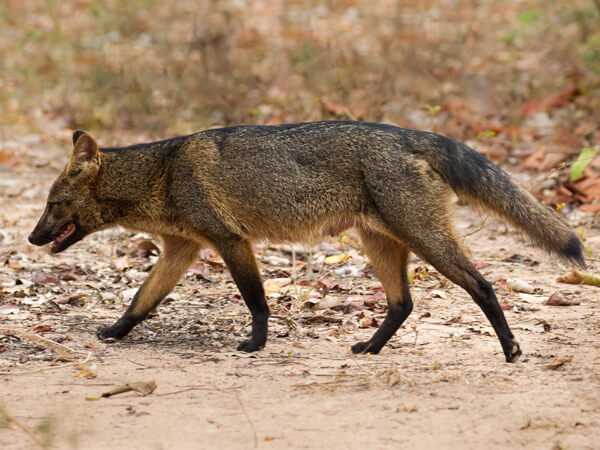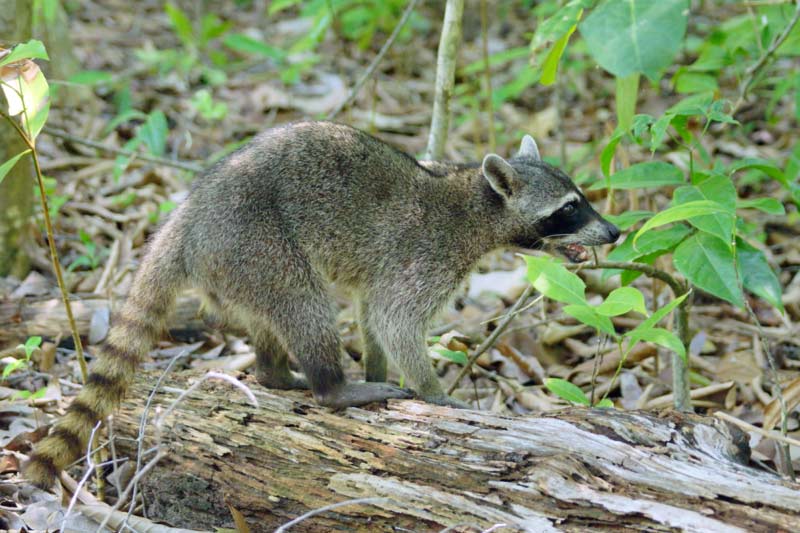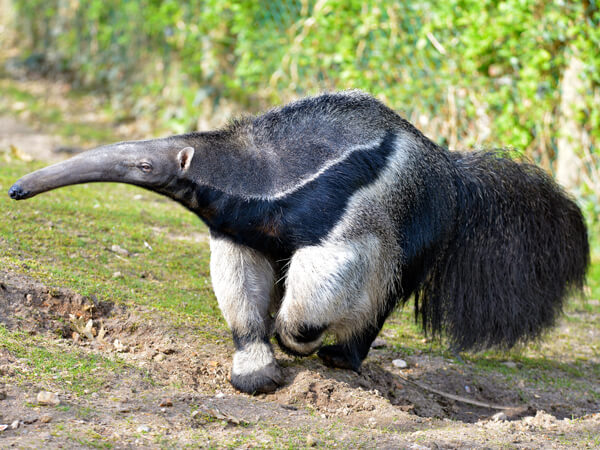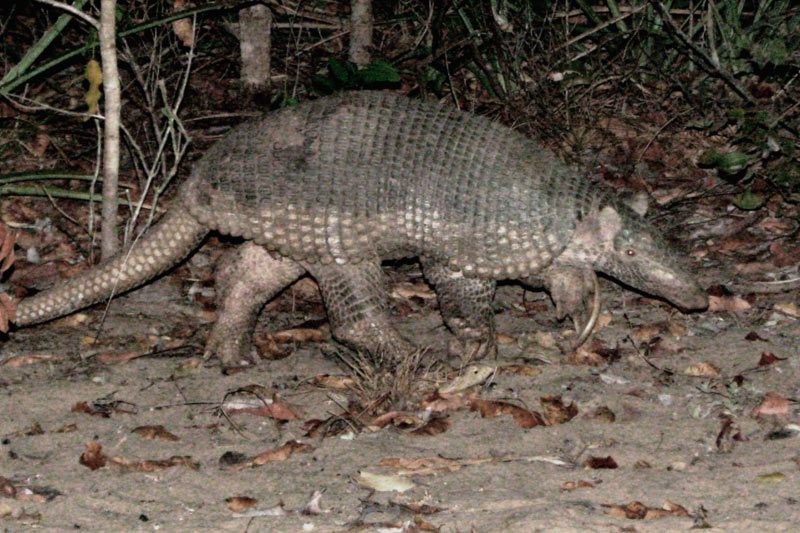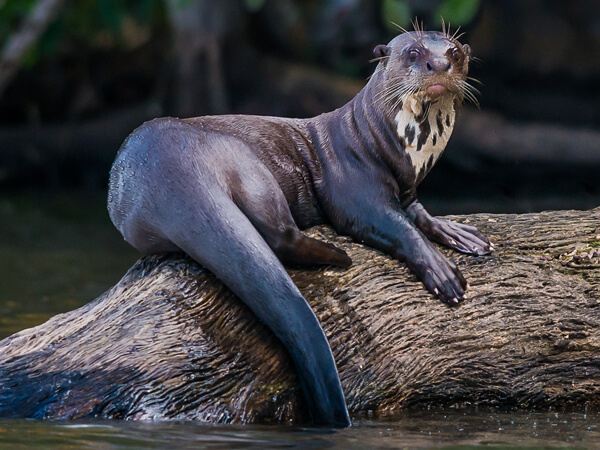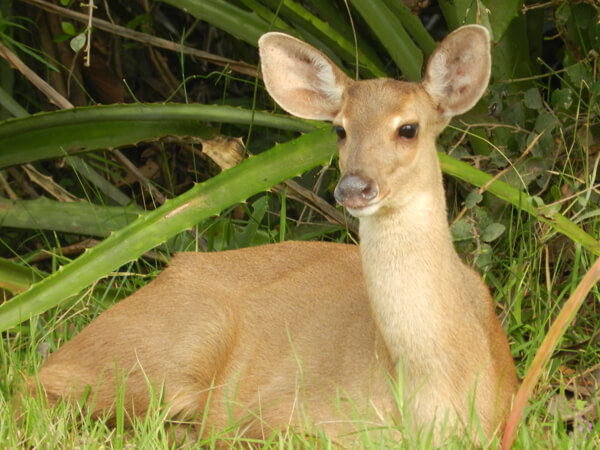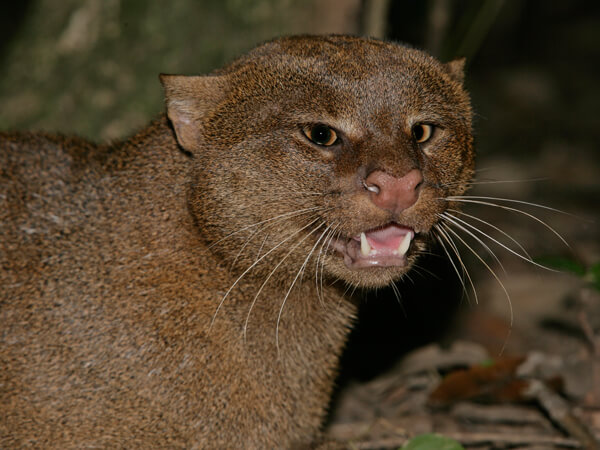In Tupi, the Paka name means "awake, vigilant, ever watchful".
Click to learn more
This large rodent lives in many areas of the country. There are also commercial breeding places that are allowed to raise these animals for the sale of products, like their meat.
Distribution
They are present in most of the Americas, from Mexico to southern Brazil, occupying almost the entire Brazilian territory.
Features
Weighing between 6 and 12 kilograms (some males can weigh up to 15 kilograms), the lowland paca is a large rodent, and second only to the capybara in terms of size. The lowland paca measures up to 70 centimeters long. It has hard, bristly fur, varying between red and dark gray in color, always with white spots on the sides of the body. The front legs have four digits while the rear legs have five toes, all equipped with sharp nails. Lowland pacas have large front teeth, a trademark of rodents. They achieve high speeds when running due to their muscular hind legs.
Behavior
Lowland pacas are considered nocturnal animals and usually go out to forage after dark. Always very skittish, they are constantly on the alert, especially as they move through the forest. They are excellent swimmers, endowed with an exceptional capacity for holding their breath, and will flee into the water when they feel threatened (like the capybaras).
Food
The diet of lowland pacas consists of fruits, leaves, roots and seeds.
Reproduction
In nature, lowland pacas usually reproduce only once a year. Gestation lasts on average 115 days, and females give birth to only one cub (although they have given birth to twins on rare occasions).
Conservation
Lowland pacas have been listed as “least concern” by both the national list of ICMBio and the IUCN.
Threats
The main threat to the species is being hunted for their flesh, which is highly valued by hunters and within the illegal trade.

